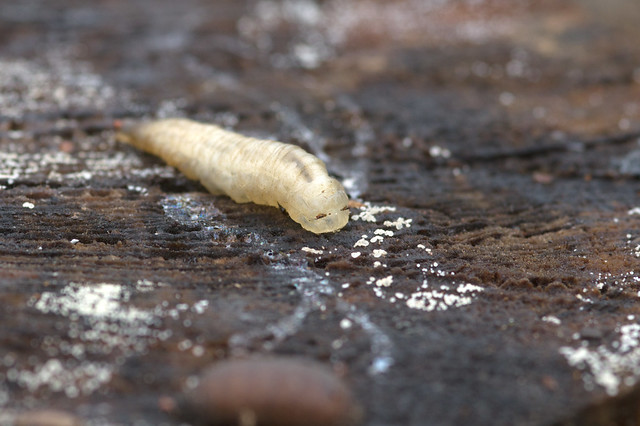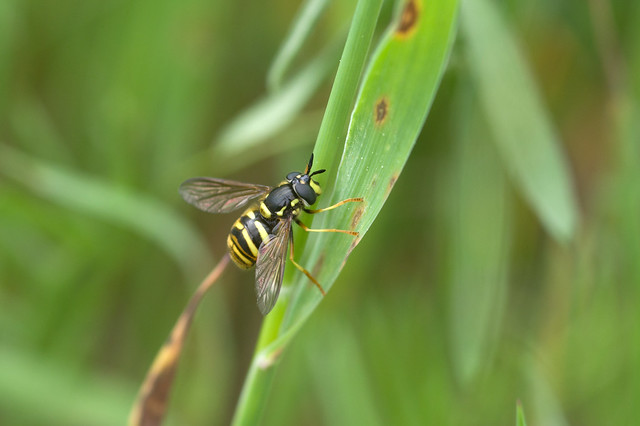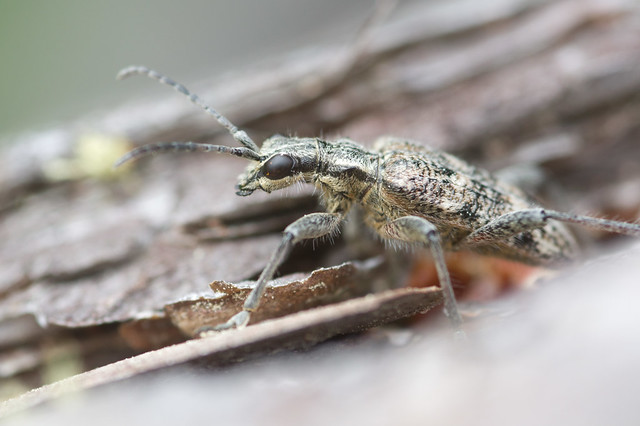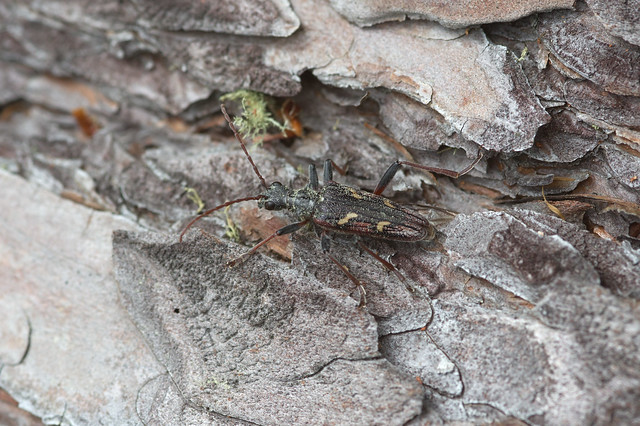All sounds very simple - except that at the time of writing this, it's currently bucketing it down with rain, and about 10 degrees outside - not good hoverfly finding weather! Hopefully the weather will improve soon to give me a fighting chance of finding Blera. We did get some reasonable weather on Monday, when a couple of staff from SNH came over to show me the sites. We didn't see any Blera (that would have been far too easy) but we did see some cracking wildlife, including a few highland specialities.
First up was a bit of a monster of a fly, and one that was very near the top of my wishlist for this trip, the bumblebee robberfly, Laphria flava. It's one of the biggest flies to be found in the UK, with the larvae feasting on longhorn beetles and the adults eating pretty much any insect unfortunate to cross their paths. This one was sitting on a stone by the path when we saw it, but then helpfully relocated to a pine stump - just like they're supposed to!
Deadwood is key for many of the special species, and a fallen pine tree produced the next set of goodies. First up was the fairly common and widespread ant beetle Thanasimus formicarius, which was swiftly ignored in favour of the much rarer Rhagium inquisitor. This medium sized longhorn has a subtle pattern of greys, browns and whites that help it blend into the pine trees that it relies upon. Much less well camouflaged is its larger relative Rhagium bifasciatum, which I saw at Farnham a few weeks ago, and which popped up again here.
At all the sites I'm searching, there are a number of specially prepared pine stumps, which have had holes cut or drilled into them to replicate the conditions which pine hoverflies need to breed. These conditions are also to the liking of other deadwood loving hoverflies, as we proved by finding the larvae of Myathropa florea and Callicera rufa in one of the stumps. The latter is a funny looking creature, a large white maggot with two sets of miniature antlers (or eyebrows if you prefer)
There were a few adult hoverflies around, including another one I'd been hoping to see, the wasp mimic Chrysotoxum arcuatum, a northern and western species which doesn't occur in my home county of Bedfordshire. All in all a very successful first day in the highlands, let's hope it's not the last successful day I have!
 |
| Callicera rufa larva |
 |
| Chrysotoxum arcuatum |




Thank you for writing so interesting blog.
ReplyDeleteAffinity can play together, I hope you can play runescape together.www.rs2joy.com